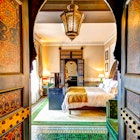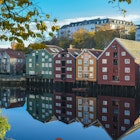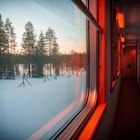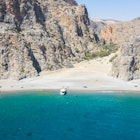
Dec 16, 2025 • 6 min read
Along Tunisia’s 1400km-long coastline, giant beach resorts abound. Here are five intriguing Tunisian beaches that will take you away from the crowds.

Dec 16, 2025 • 6 min read
Along Tunisia’s 1400km-long coastline, giant beach resorts abound. Here are five intriguing Tunisian beaches that will take you away from the crowds.

Dec 16, 2025 • 13 min read
From Yosemite to Joshua Tree, California boasts more national parks than any other state, as well as a bevy of national forests, seashores and monuments.

Dec 16, 2025 • 4 min read
Bone up on New Orleans' culture with recommendations on what to read, watch and listen to, plus packing tips and a glossary of local terms.

Dec 16, 2025 • 9 min read
Located between Norway and the North Pole, Svalbard feels like the edge of the world – and that's the appeal. Get all the details you need to plan a visit.

Dec 16, 2025 • 8 min read
Funken Lodge was designed with comfort in mind. Here's what you should know about this respite from the snow and polar air.

Dec 16, 2025 • 6 min read
Want to travel around in Cuba? See the best of the island with our guide to transportation.

Dec 16, 2025 • 5 min read
Portugal is incredibly family-friendly. Check out our top tips and the coolest experiences for your next adventure with children in tow.

Dec 16, 2025 • 22 min read
Whether it’s the atmosphere or the culture, some places are naturally suited for people traveling alone. These 23 spots are perfect for solo travelers.

Dec 16, 2025 • 6 min read
Tunisia is North Africa's best-kept secret. Plan your visit with this guide to activities, transport and budget.

Dec 15, 2025 • 11 min read
The smallest country in North Africa crams an astonishing variety of riches into its compact territory. Here are the best places to visit in Tunisia.

Dec 15, 2025 • 4 min read
Get prepared to visit Morocco with our list of essential books, music and films. Know what to pack and say when you're there too.

Dec 15, 2025 • 7 min read
The wilderness areas of Cuba's national parks conceal a tremendous number of unique species and are practically unknown to foreign visitors.

Dec 15, 2025 • 10 min read
The most exciting thing for anyone visiting the USA? The country’s size and scope. Plan your itinerary with our list of the country’s best places.

Dec 15, 2025 • 9 min read
From scuba diving in Central America to lounging on white-sand shorelines in Southeast Asia, here are 11 tropical trips that won't break the bank.

Dec 15, 2025 • 5 min read
Norway is known for its spectacular landscapes and, as one of the most beautiful countries on the planet, there's no such thing as a bad time to visit.

Dec 15, 2025 • 9 min read
The path to see the pyramids and the other top ancient sites is well trodden, but it’s possible to get off the beaten track on your adventures in Egypt.

Dec 15, 2025 • 8 min read
Beautiful and occasionally chaotic Mexico City could overwhelm unsuspecting visitors – get ready with this guide to health, safety and etiquette.

Dec 15, 2025 • 7 min read
Rise and shine in the wintery wilderness of the Arctic after riding the night train north from Stockholm.

Dec 15, 2025 • 4 min read
Can’t decide which glorious Greek islands to include on your week-long itinerary? We have some tips to help you plan.

Dec 15, 2025 • 7 min read
The under-explored North African nation of Algeria offers tremendous gardens, beaches, ruins, castles and cuisine to explore and embrace.

Dec 14, 2025 • 6 min read
One of the most "Italy" travel experiences in Italy is a hike along the Path of the Gods. This guide will set you up for the perfect route.

Dec 14, 2025 • 3 min read
Consistently balmy weather, ridiculously white sandy shores, diving and snorkeling and calypso-wafting beach bars make for an excellent tropical vacation.